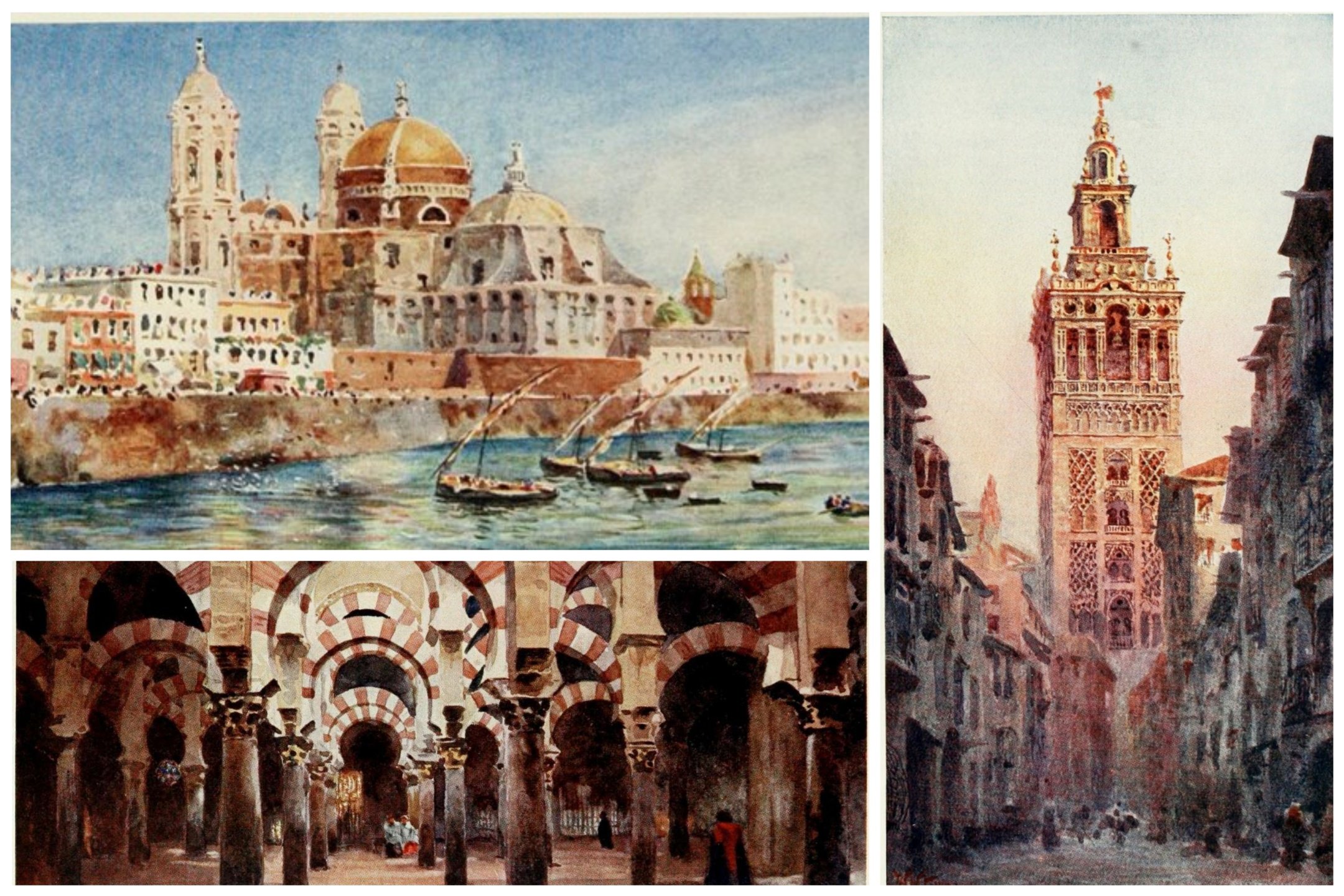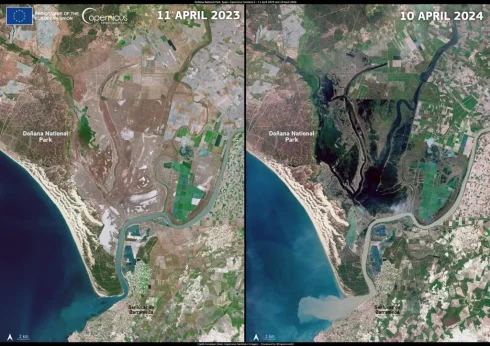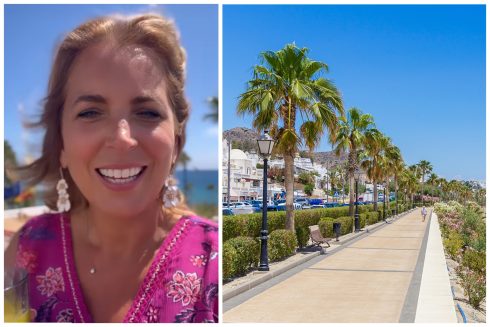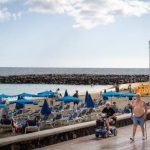A REMARKABLE tome by a British writer and painter on Spain’s wealth of incredible cathedrals was released 115 years ago this month.
Cathedral Cities of Spain was the culmination of a months-long voyage around Spain by London-born watercolourist WW Collins (1862-1951).
A prolific author most famous for his fiction work, including 27 novels, 60 short stories, 14 plays and over 100 works of non-fiction, his homage to Spain’s city life and religious architecture sometimes gets overlooked.
The book serves as a bridge between the modern Spain that we know today and its grand, imperial past, long consigned to the dustbin of history.
He disembarked at the port of Cadiz in 1908 and began a tour of Andalucia, moving up to Valencia, heading inland and then winding up in Spain’s northern regions.
Always accompanied by his trusty easel and paint palette, he visited 24 cities by train and produced an astonishing 60 watercolours.
And in the process, he documented a Spain that was only just catching up with the rest of Europe, and still with one foot in the past.
Cadiz – City of the past
Once the ‘greatest port in the world’, in the early 1900s Collins lamented: “Where are thy glories now, oh, Cadiz?”
Many would argue that the capital of tuna territory has recovered its former grace, although it remains some distance from being the world’s greatest port.
Collins described it as ‘still a White City lying embosomed on a sea of emerald and topaz’.

Unfortunately Sevilla had robbed Cadiz of her trade, leaving her ‘little more than a port of call for American tourists.’
He produced two paintings in Cadiz; one of the cathedral and another of the central marketplace – ‘a bustling scene, full of colour.’

Sevilla – The most fascinating city in Spain

Collins fell in love with the life of the roofs of Sevilla.
“In early spring before the great heat comes, and in autumn before the cold winds arrive […] Seville’s washing hangs out to air, and up on the roofs, in the warm sun, with the hum of the streets far below, you will hear the quaint song—so Arabian in character—of the lavandera, as she pegs out the damp linen in rows.
“In the evening the click-a-click-click of the castanets and the sound of the guitar, broken by merry laughter, tells one that perhaps the Sevillano has fathomed the mystery of knowing how best to live.”

He made a number of sketches and paintings of Sevilla’s remarkable offerings, including the Alcazar and inside the Cathedral.
But it was the 12th century Giralda Tower that stands out, the ‘magnificent relic of the Moslem’s rule [that] rears its height far above everything else in Seville.’
Cordoba – Second only to the great Damascus
The first thing Collins noted upon his arrival in Cordoba a century ago was that, under seven hundred years of Christian rule, it had ‘dwindled down to what one finds it to-day—a quiet, partly ruinous town.’
“Of all its great buildings nothing remains to remind one of the past but the ruins of the Alcázar—now a prison, a portion of its walls, and the much mutilated Mesquita—the Cathedral.”

The Mesquita dazzled him most of all with its scale and size – Collins erroneously claims it is ‘the second largest church of any in existence.’
“Coming suddenly into the cool shade of its many pillared avenues, I felt as if transplanted into the silent depths of a great forest.
“In every direction I looked, the trunks of huge trees apparently rose upwards in ordered array.
“The light here and there filtered through gaps on to the red-tiled floor, which only made the deception greater by its resemblance to the needles of a pine-wood or the dead leaves of autumn.
“Then the organ boomed out a note and the deep bass of a priest in the coro shattered the illusion.”

The Cordoba bridge was captured in his typical watercolour style, with its 16 arches and guarded at one end by a Moorish Tower, ‘round which the road passes instead of through a gateway, thus giving additional security to the defence.’
Granada – My most ideal situation
The Englishman found Granada and its location on the edge of a fertile plain at the base of the Sierra Nevada to be perhaps his most agreeable.
He found ‘tortuous streets which wind up the steep hill sides’ and marvelled at ‘the life of an ordinary Spanish town’ in the springtime.

The Alhambra, which he calls the most fascinating spot in all Spain, rises above the city and ‘broods over past glories of the civilised Moor’.
“How is it possible to describe the Alhambra?” he asks.

Before the location had been turned into a UNESCO heritage site through which three million people trampled each year, Collins set foot through the ‘massive doors.’
Here he produced a sketch of the Court of the Lions – ‘so called from the central fountain upheld by marble representations of the kingly beast, surrounded by a beautiful arcade.’
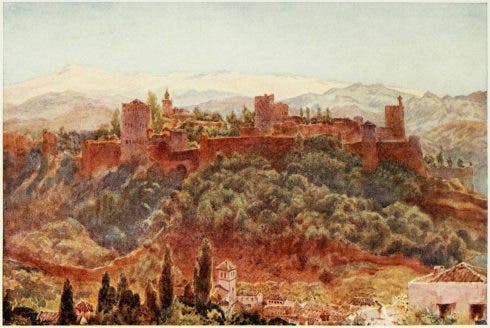
Malaga – The noisiest town in Spain
Cadiz’s rival for the title of oldest seaport in Spain, but Collins was clear that it was definitely ‘the noisiest town in Spain’ at the start of the 20th century.
Although every city in Andalucia was ‘a babel of street-cries’, Malaga was just a little more so than all the rest.
“The seranos, or night-watchmen, disturb one’s rest as they call out the hour of the night, or whistle at the street corners to their comrades,” he writes, while ‘a breeze makes hideous the hours of darkness by the banging to and fro of unsecured shutters.’

While sketching from the harbour, he described the scene as ‘an impressive fabric with all its architectural incongruities.’
“So it struck me as I sat on the quayside of the Malagueta making my sketch, sadly interfered with by an unpleasant throng of idling loafers.”
He bade farewell to Malaga by serenading the ‘delightful climate despite the fierce winds and the dust they raise.
“Though rain seldom falls the cool sea breezes in summer bring a refreshing tonic to the dweller up country.”
Collins also hinted at Malaga’s touristic future, observing that ‘many Spaniards at this season come here for bathing, and obtain a maximum of sunshine without the intense heat of the interior.’

Valencia – The great bird fanciers
Collins wrote that the road that connected the city of Valencia to its port was the ‘busiest high road I saw in Spain.’
“Strings of laden donkeys, waggonettes crammed with good-humoured laughing fisher[men] and country folk pass along, an electric tram carries those who can afford the extra centimos, and the carriages of Valencia’s well-to-do citizens take them to the harbour for a breath of sea air out on the breakwaters.”
Once again echoing the Spanish costa’s visitor-friendly future, he noted that the wines were so cheap that it was more expensive to drink water, but with one key difference – ‘drunkenness is unknown.’
The local peasantry were ‘very illiterate and scrupulously honest’ and ‘like the Andalusian, he is absolutely trustworthy in all his dealings, which are conducted by word of mouth.’
There was just one lawyer in Valencia to the ten further north, ‘ where modern ways of life are more in vogue.’

He settled down to paint his customer watercolour of Valencia’s cathedral, although he was hardly impressed.
“The Cathedral was originally a Gothic structure, but one fashion following another, has been at different times so altered and robbed of all architectural beauty that there remains but little of interest in the building.”

